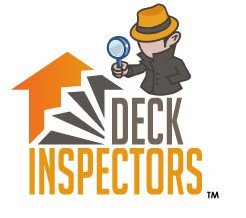Creative Ideas for Decorating Your Waterproofed Wood Deck
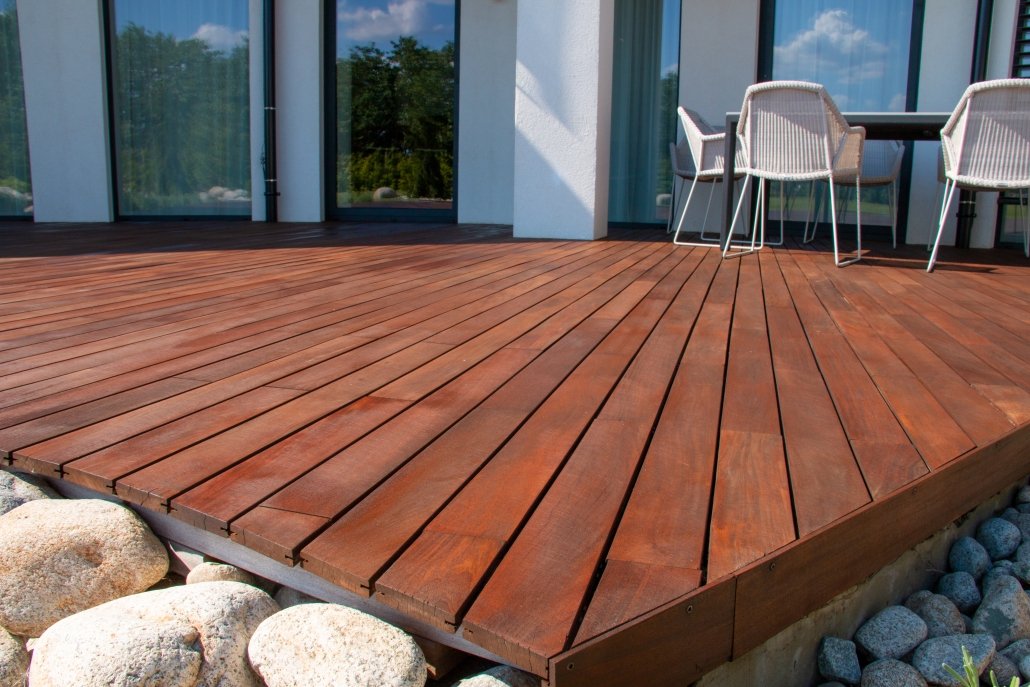
Once you’ve invested in wood deck waterproofing, your outdoor space becomes more than just weather-resistant—it becomes a blank canvas for creativity, comfort, and entertainment. Whether you’re preparing to host family and friends or want a quiet place to unwind, a waterproofed deck provides the perfect foundation for transforming your exterior into a functional and stylish oasis. Here are some creative decorating ideas to help you make the most of your protected outdoor space. Bring the Indoors Out with Cozy Furnishings A waterproofed deck opens the door to all-weather comfort, allowing you to add soft furnishings without fear of moisture damage. Consider outdoor rugs, weather-resistant throw pillows, and cushioned seating that mimics the comfort of an indoor living room. Sectional sofas made for outdoor use create a cozy gathering area, while Adirondack chairs and lounge chaises offer stylish, low-maintenance options for relaxation. Layering rugs and throws in complementary colors or patterns can create visual warmth and elevate the overall ambiance. Select UV-resistant fabrics to keep your space vibrant throughout the year. Accent your furniture layout with a central coffee table or a fire pit table that invites conversation and cozy evenings under the stars. With wood deck waterproofing protecting your foundation, you can confidently set up décor that’s both stylish and functional. Add Personality with Plants, Lighting, and Accessories Natural greenery adds life to any deck and enhances the relaxing outdoor feel. Use a mix of potted plants, vertical gardens, or hanging planters to introduce layers of texture and color, creating a visually appealing display. Hardy, low-maintenance plants, such as succulents, herbs, or ornamental grasses, are excellent choices that require minimal upkeep. Lighting is another essential element for setting the mood. String lights overhead can create a soft, inviting glow, while solar-powered lanterns or LED deck lights can line pathways or accent furniture pieces. For a modern touch, install recessed lighting along the deck’s perimeter or stairs. Don’t forget the little things—decorative side tables, candle lanterns, wind chimes, or even an outdoor bar cart can personalize your space and make it feel like an extension of your home. Thanks to wood deck waterproofing, your décor can remain safe and intact even during unpredictable Southern California weather. In conclusion, once your deck is sealed and protected through professional wood deck waterproofing, the fun part begins—turning that durable surface into a space you love to use. With thoughtful furnishings, cozy lighting, greenery, and personal touches, you can transform your deck into a year-round destination for entertaining and relaxation. Whether you’re sipping morning coffee, hosting a sunset dinner, or enjoying quiet time with a book, your beautifully decorated and waterproofed wood deck will become your favorite place to be. Ready to start your deck transformation? Reach out to us today to learn more about waterproofing solutions and get inspired to bring your outdoor vision to life!
The True Cost of Ignoring SB 721: Fines, Lawsuits, and Liability Risks

Owning or managing a multifamily residential property in California comes with significant responsibilities, including compliance with SB 721, a law designed to enhance the safety of exterior elevated structures such as decks, balconies, and stairways. Failure to adhere to SB 721 requirements can lead to severe consequences, including fines, lawsuits, and liability risks. Understanding these costs is crucial for property owners and managers who want to avoid legal trouble and ensure tenant safety. SB 721: Financial Penalties and Legal Consequences Ignoring SB 721 can result in substantial financial penalties. The law mandates that all multifamily properties with exterior elevated elements undergo professional inspections every six years. If property owners fail to comply, they may face fines from local building departments. These fines can escalate over time, leading to significant financial burdens. Beyond fines, property owners who neglect required inspections may be subject to legal action. Tenants or regulatory agencies can file lawsuits for noncompliance, especially if a structural failure occurs. In extreme cases, noncompliance can result in court orders mandating repairs, further increasing costs. By proactively scheduling SB 721 inspections, property owners can avoid unnecessary legal and financial strain. Liability Risks and Tenant Safety Concerns One of the most serious risks of ignoring SB 721 is liability for injuries or fatalities caused by structural failures. If a deck or balcony collapses due to neglect, property owners can be legally responsible for damages, medical expenses, and even wrongful death claims. In such cases, insurance companies may refuse to cover losses, leaving owners to pay out-of-pocket for settlements or judgments. In addition to legal liability, maintaining safe structures can harm a property’s reputation and tenant relations. Unsafe living conditions can lead to decreased occupancy rates, difficulty attracting new tenants, and potential lease agreement violations. Prioritizing SB 721 compliance helps property owners maintain a secure environment, protecting residents and their investments. SB 721 Conclusion The cost of ignoring SB 721 extends far beyond initial fines, including legal repercussions, liability risks, and potential harm to tenants. Property owners can avoid unnecessary expenses and maintain a safe, legally compliant property by staying proactive and ensuring regular inspections. Investing in inspections today can prevent costly consequences in the future, safeguarding both financial and legal interests. Click here to get in contact with an expert from Deck Inspectors today! Deck Inspectors for Southern California is happy to offer our services in Los Angeles County, Riverside County, Orange County as well as San Diego County and all Southern California surrounding areas like: Los Angeles, Irvine, Long Beach, La Jolla, Glendale, Pasadena, Santa Ana, Huntington Beach, Dana Point, Burbank, Santa Monica, Anaheim, Temecula, Encinitas, Chula Vista, Vista, Mesa, San Diego, Oceanside, Escondido, Carlsbad, Poway, Mission Viejo, and El Cajon.
Safety tips for using your multifamily dwelling unit deck

Decks in multifamily dwelling units offer a great outdoor space for relaxation and social gatherings, but they must be used safely to prevent accidents and structural damage. Following best practices for deck safety and ensuring compliance with SB 326 Inspections can help keep these spaces secure for residents and guests alike. Here are some key safety tips to follow. Regular Inspections and Maintenance One of the most critical steps in ensuring deck safety is scheduling regular inspections. SB 326 Inspections require multifamily property owners in California to have their exterior elevated structures, including decks, balconies, and stairways, professionally assessed by a qualified inspector every six years. These inspections help identify potential hazards such as wood rot, fastener corrosion, and structural weaknesses before they become serious safety risks. Beyond mandatory inspections, residents should also perform routine visual checks. Look for signs of wear and tear, such as loose railings, cracked boards, or rusted fasteners. Reporting these issues to property management promptly can help prevent accidents and costly repairs. Safe Usage Practices for Residents To ensure everyone’s safety, residents should follow key usage guidelines when enjoying their deck space: Avoid Overloading: Decks have specific weight limits, and exceeding them can compromise their structural integrity. Avoid placing heavy furniture, grills, or large groups of people beyond the deck’s capacity. Keep It Clear and Clutter-Free: Ensure the deck remains free of debris, excess furniture, and other obstacles that could pose tripping hazards. Be Mindful of Fire Safety: Use grills and fire pits responsibly, following all property regulations. Keep flammable items away from heat sources and have a fire extinguisher nearby. Check Railings and Guardrails: Always ensure that railings are sturdy and in good condition. Leaning or climbing on railings can be dangerous and should be avoided. SB 326 Inspections Conclusion Using your multifamily dwelling unit deck safely requires routine maintenance, compliance with SB 326 Inspections, and responsible usage. Property owners must stay proactive with professional assessments to ensure structural integrity, while residents should adhere to safety guidelines to prevent accidents. By following these best practices, everyone can enjoy their deck space with peace of mind, knowing that it remains a secure and well-maintained area. Click here to get in contact with an expert from Deck Inspectors today! Deck Inspectors for Southern California is happy to offer our services in Los Angeles County, Riverside County, Orange County as well as San Diego County and all Southern California surrounding areas like: Los Angeles, Irvine, Long Beach, La Jolla, Glendale, Pasadena, Santa Ana, Huntington Beach, Dana Point, Burbank, Santa Monica, Anaheim, Temecula, Encinitas, Chula Vista, Vista, Mesa, San Diego, Oceanside, Escondido, Carlsbad, Poway, Mission Viejo, and El Cajon.
The Science Behind Deck Inspections: Key Structural Weaknesses Professionals Look For
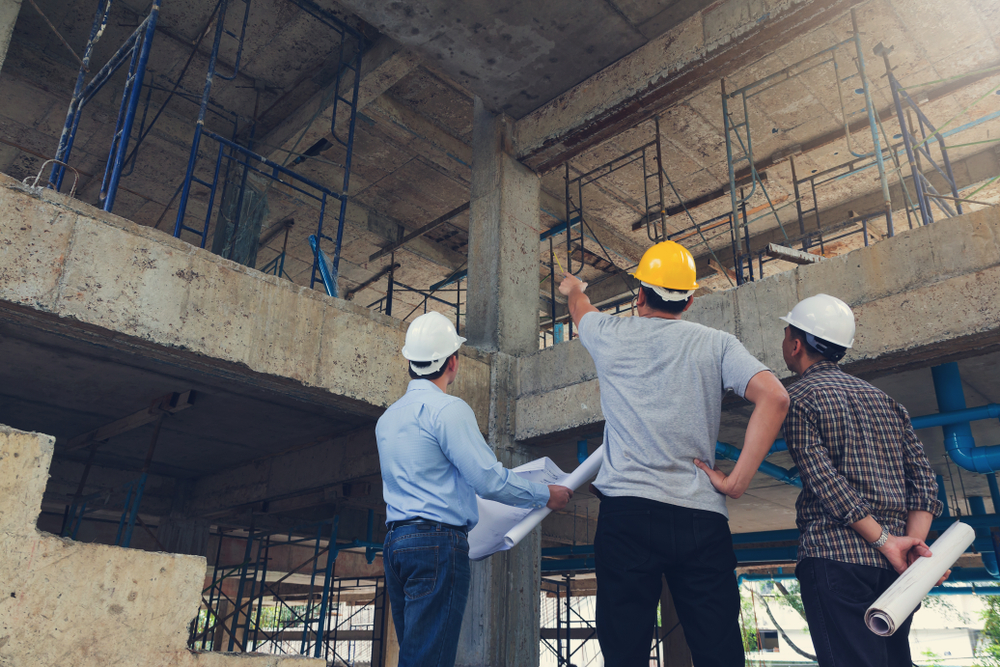
Deck inspections are critical to ensuring safety and structural integrity, particularly in regions like Southern California, where decks are exposed to varying weather conditions. Expert deck inspectors use a systematic approach to identify key weaknesses that could compromise a deck’s longevity and safety. By understanding the technical aspects of deck inspections, homeowners and property managers can better maintain their outdoor structures and prevent costly failures. Expert Deck Inspectors & Identifying Wood Rot and Decay One of the most common structural weaknesses that expert deck inspectors look for is wood rot. Wood is prone to fungal decay, especially when untreated or exposed to excessive moisture. Over time, this deterioration weakens the deck’s support system, making it vulnerable to collapse. Inspectors assess the condition of joists, beams, and ledger boards, using tools such as moisture meters and probes to detect hidden rot beneath the surface. If wood rot is present, replacing compromised sections and improving drainage or sealing methods can help prevent further damage. Fastener Corrosion and Connection Failures A deck’s strength depends on the wood and the metal fasteners that hold it together. Bolts, screws, and nails are susceptible to corrosion, particularly in coastal areas where salt air accelerates rusting. Expert deck inspectors examine these fasteners, looking for signs of rust, looseness, or missing hardware that could weaken the deck’s overall stability. Stainless steel or galvanized fasteners are often recommended for increased durability, and regular maintenance can help prevent early deterioration. Evaluating Load Capacity and Structural Integrity A crucial element of deck safety is its ability to bear weight effectively. Overloading a deck beyond its designed load capacity can lead to catastrophic failures. Expert deck inspectors calculate the deck’s weight-bearing capability by assessing joist spacing, beam size, and post connections. They also check for sagging or shifting in structural components, which may indicate that the deck is struggling under excessive stress. In cases where reinforcement is needed, professionals may recommend adding additional support posts, stronger fasteners, or replacing weakened components. Expert Deck Inspectors Conclusion Understanding the science behind deck inspections helps property owners maintain safe and structurally sound outdoor spaces. Expert deck inspectors focus on critical areas such as wood rot, fastener corrosion, and load capacity to identify potential weaknesses before they become hazardous. Regular inspections and timely repairs enhance safety and extend a deck’s lifespan, ensuring years of reliable use. For homeowners and property managers in Southern California, scheduling routine deck evaluations with certified professionals is essential in proactive maintenance. Click here to get in contact with an expert from Deck Inspectors today! Deck Inspectors for Southern California is happy to offer our services in Los Angeles County, Riverside County, Orange County as well as San Diego County and all Southern California surrounding areas like: Los Angeles, Irvine, Long Beach, La Jolla, Glendale, Pasadena, Santa Ana, Huntington Beach, Dana Point, Burbank, Santa Monica, Anaheim, Temecula, Encinitas, Chula Vista, Vista, Mesa, San Diego, Oceanside, Escondido, Carlsbad, Poway, Mission Viejo, and El Cajon.
SB 721 Inspection Deadlines: Are You in Compliance?

Compliance with SB 721 Inspections is essential for multifamily property owners in California. This law mandates regular inspections of exterior elevated elements, such as decks, balconies, and stairways, to ensure structural safety and prevent catastrophic failures. Understanding key compliance deadlines and taking proactive steps can help property owners avoid fines and legal liabilities. Key Compliance Deadlines for SB 721 Inspections SB 721 requires that all multifamily residential buildings with three or more units have their exterior elevated elements inspected by a licensed professional every six years. The initial compliance deadline was set for January 1, 2025. Property owners must complete their first inspection before this date to avoid penalties. Additionally, if an inspection reveals structural issues, property owners have 120 days to complete necessary repairs. If repairs are not completed within this timeframe, an extension of up to 180 days may be granted if a plan of action is submitted. Failure to complete the required repairs within the allowed period can result in fines or enforcement actions. Steps to Ensure Compliance and Avoid Penalties To stay compliant with SB 721 Inspections, property owners should take the following proactive measures: Schedule an Inspection Early – Don’t wait until the deadline approaches. Secure an appointment with a qualified inspector well in advance to allow ample time for necessary repairs. Work with a Licensed Inspector – Inspections must be conducted by a qualified professional, such as a structural engineer, architect, or licensed contractor with expertise in elevated structures. Address Repairs Promptly – If issues are identified, begin repairs immediately to stay within the allotted timeframe and avoid additional penalties. Keep Proper Documentation – Maintain records of inspections and repairs to provide proof of compliance if regulatory authorities request. SB 721 Inspections Conclusion Staying compliant with SB 721 Inspections is not just about avoiding fines. It’s about ensuring the safety of tenants and protecting property investments. Property owners should take action now to schedule inspections and complete any necessary repairs. By staying ahead of compliance requirements, property owners can avoid legal complications and maintain a safe and secure living environment for residents. Click here to get in contact with an expert from Deck Inspectors today! Deck Inspectors for Southern California is happy to offer our services in Los Angeles County, Riverside County, Orange County as well as San Diego County and all Southern California surrounding areas like: Los Angeles, Irvine, Long Beach, La Jolla, Glendale, Pasadena, Santa Ana, Huntington Beach, Dana Point, Burbank, Santa Monica, Anaheim, Temecula, Encinitas, Chula Vista, Vista, Mesa, San Diego, Oceanside, Escondido, Carlsbad, Poway, Mission Viejo, and El Cajon.
How Elevated Walkways Can Improve the Functionality of Cities and Towns

Modern urban planning is constantly evolving to address congestion, pedestrian safety, and environmental concerns. One solution that has gained traction in many cities worldwide is the implementation of elevated walkways. These structures enhance mobility, improve safety, and create a more efficient urban environment. Enhancing Urban Mobility and Connectivity One of the most significant benefits of elevated walkways is their ability to improve mobility and connectivity in urban areas. By providing pedestrians with a separate, dedicated space above street level, these walkways reduce congestion on roads and sidewalks, allowing for smoother vehicular and foot traffic flow. Cities with high pedestrian volumes, such as New York, Hong Kong, and Singapore, have successfully integrated elevated pedestrian pathways into their infrastructure, improving efficiency and convenience. Elevated walkways reduce congestion and create direct routes between key locations such as office buildings, shopping centers, transit hubs, and recreational areas. This interconnectedness not only saves time for pedestrians but also encourages walking as a primary mode of transportation, contributing to healthier lifestyles and reducing reliance on cars. Improving Safety and Sustainability With Elevated Walkways Safety is a primary concern in urban design, and elevated walkways offer a practical solution to reduce pedestrian-vehicle conflicts. With increasing traffic-related accidents in busy metropolitan areas, separating pedestrians from roadways significantly enhances public safety. These walkways can be particularly beneficial near schools, business districts, and public transportation hubs where foot traffic is high. Beyond safety, elevated walkways contribute to sustainability by promoting eco-friendly urban development. When integrated with green spaces, they enhance air quality and provide shaded, comfortable pedestrian walkways, such as rooftop gardens and tree-lined pathways. Additionally, they encourage non-motorized transportation, reduce carbon emissions, and help cities meet their environmental goals. Elevated Walkways Conclusion Incorporating elevated walkways into urban infrastructure presents a forward-thinking approach to city planning. These walkways are crucial in creating more functional and livable cities by improving mobility, enhancing pedestrian safety, and supporting sustainability. As more urban areas seek innovative solutions to accommodate growing populations and minimize traffic congestion, elevated pedestrian pathways will continue to be a valuable and effective strategy. Click here to get in contact with an expert from Deck Inspectors today! Deck Inspectors for Southern California is happy to offer our services in Los Angeles County, Riverside County, Orange County as well as San Diego County and all Southern California surrounding areas like: Los Angeles, Irvine, Long Beach, La Jolla, Glendale, Pasadena, Santa Ana, Huntington Beach, Dana Point, Burbank, Santa Monica, Anaheim, Temecula, Encinitas, Chula Vista, Vista, Mesa, San Diego, Oceanside, Escondido, Carlsbad, Poway, Mission Viejo, and El Cajon.
How to inspect a deck for safety: A step-by-step guide on inspecting your deck for common safety hazards

Regular deck inspections ensure structural integrity and safety, especially in compliance with regulations such as SB 326 in California. Whether you’re a homeowner or a property manager, conducting routine inspections can help identify hazards before they become costly or dangerous. Below is a step-by-step guide to inspecting your deck for common safety issues. SB 326 Step 1: Examine the Deck’s Structural Components The first step in a thorough deck inspection is to check the main structural components, including posts, beams, and joists. Look for any signs of wood rot, cracking, or warping, as these can compromise the deck’s stability. Pay close attention to the ledger board, which connects the deck to the building; it can be a significant safety risk if it is not adequately secured or shows signs of deterioration. By SB 326, multi-unit residential properties must undergo professional deck inspections to ensure these structural components remain secure and safe. Step 2: Inspect Fasteners, Railings, and Connections Fasteners such as screws, nails, and bolts play a crucial role in holding a deck together. Over time, they can loosen, corrode, or weaken, which may lead to structural instability. Inspect all fasteners for rust or missing components and tighten or replace them as necessary. Railings and balusters should be firmly attached and movement-free, as loose railings can pose serious fall hazards. Under SB 326, decks in multifamily residences must meet strict safety standards, including secure railings and properly maintained fasteners. Step 3: Assess the Deck’s Surface and Support System The decking boards should be free of excessive wear, splintering, or sagging. Look for water damage, mold, or mildew, indicating drainage issues accelerating deck deterioration. The support posts should be stable, with no signs of shifting or sinking. Checking the footings for erosion or soil displacement is also crucial, especially in regions prone to seismic activity or heavy rainfall. Step 4: Evaluate Drainage and Waterproofing Proper drainage is key to prolonging a deck’s lifespan. Ensure that water does not pool on the deck surface and that gutters or downspouts direct water away from structural components. A high-quality sealant can help protect against moisture damage, an essential step for decks exposed to harsh weather conditions. SB 326 Conclusion Regular deck inspections proactively ensure safety and longevity while complying with regulations like SB 326. By systematically examining structural components, fasteners, railings, and drainage systems, homeowners and property managers can identify and address potential hazards before they become serious issues. Professional inspections are not just recommended for multi-unit residences but are required. By staying ahead of maintenance and safety concerns, you can protect your investment and the well-being of those using your deck. Click here to get in contact with an expert from Deck Inspectors today! Deck Inspectors for Southern California is happy to offer our services in Los Angeles County, Riverside County, Orange County as well as San Diego County and all Southern California surrounding areas like: Los Angeles, Irvine, Long Beach, La Jolla, Glendale, Pasadena, Santa Ana, Huntington Beach, Dana Point, Burbank, Santa Monica, Anaheim, Temecula, Encinitas, Chula Vista, Vista, Mesa, San Diego, Oceanside, Escondido, Carlsbad, Poway, Mission Viejo, and El Cajon.
Success Stories: How SB 721 and SB 326 Prevented Potential Disasters

California’s SB 721 and SB 326 laws were designed with one goal in mind: to protect lives by ensuring the structural integrity of exterior elevated elements (EEEs) like balconies, decks, and stairways. These inspections have proven their worth by preventing catastrophic accidents and reinforcing building safety. Let’s explore real-life and hypothetical scenarios where SB 721 Inspections and SB 326 compliance helped avert potential disasters. Early Detection of Structural Failures In a Southern California apartment complex, a routine SB 721 Inspection revealed alarming signs of wood rot and water intrusion in several balcony support beams. While the damage wasn’t visible at first glance, the inspection team’s thorough assessment uncovered deep-seated decay that could have caused a sudden balcony collapse. Thanks to SB 721’s mandatory inspections, property managers swiftly scheduled repairs, reinforcing the beams and ensuring the safety of their tenants. Similarly, a condominium association complying with SB 326 found corroded fasteners on multiple decks during their first round of inspections. What seemed like minor rust on the surface was, in fact, severe internal corrosion, weakening the deck’s entire support structure. Immediate action was taken to replace the fasteners and strengthen the decks, preventing what could have been a devastating accident had the issue gone unnoticed. Enhancing Resident Safety and Property Value Beyond preventing structural failures, SB 721 Inspections and SB 326 compliance offer long-term benefits to residents and property owners. For example, a Los Angeles multifamily building recently underwent its required inspection, uncovering minor waterproofing issues and loose railings. Although these defects weren’t yet critical, addressing them promptly ensured resident safety and boosted property value by demonstrating proactive maintenance. In another case, a condominium board proudly shared how their compliance with SB 326 reassured homeowners and potential buyers that their building met the highest safety standards. This transparency built trust within the community, showcasing the real-world benefits of these inspections beyond simple legal adherence. The Lifesaving Impact of Proactive SB 326 & SB 721 Inspections The success stories of SB 721 Inspections and SB 326 compliance underscore the lifesaving importance of regular structural evaluations. These regulations push property managers and homeowners’ associations to stay vigilant, catching hidden dangers before they escalate into tragedies. By identifying and addressing issues early, these laws protect not only physical structures but also the lives of those who live and work within them. Don’t wait for a warning sign — proactive maintenance and compliance are the keys to keeping your property safe and secure. If you’re due for an inspection, contact our expert team today to schedule your SB 721 Inspection or SB 326 compliance check. Let’s build a safer future together. Deck Inspectors for Southern California is happy to offer our services in Los Angeles County, Riverside County, Orange County as well as San Diego County and all Southern California surrounding areas like: Los Angeles, Irvine, Long Beach, La Jolla, Glendale, Pasadena, Santa Ana, Huntington Beach, Dana Point, Burbank, Santa Monica, Anaheim, Temecula, Encinitas, Chula Vista, Vista, Mesa, San Diego, Oceanside, Escondido, Carlsbad, Poway, Mission Viejo, and El Cajon.
Preparing for SB 721 and SB 326 Inspections: What Property Managers Need to Know
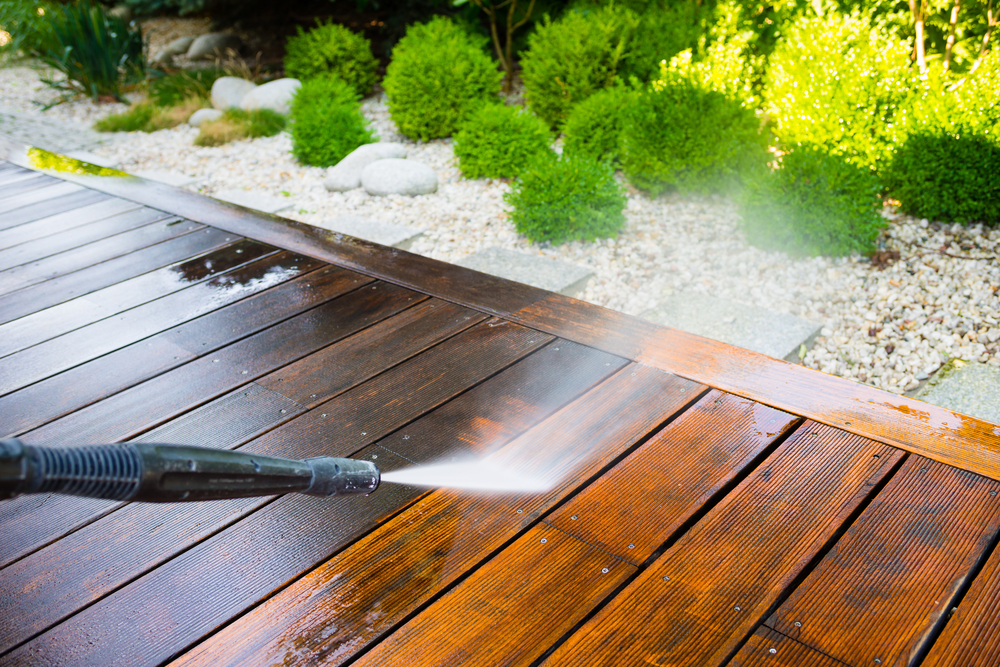
As a property manager in Southern California, staying compliant with state laws like SB 721 and SB 326 is essential to ensuring the safety and longevity of your buildings. These laws mandate the regular inspection of exterior elevated elements (EEEs), such as balconies, decks, and stairways, to prevent structural failures. Proper preparation for SB 326 Inspections streamlines the process and minimizes costly repairs and liability risks. Let’s break down the key steps property managers can take to get inspection-ready properties. Step 1: Gather Essential Documentation Before scheduling an SB 326 Inspection, organize all relevant documentation related to your property’s exterior elevated elements. This will help your inspector understand the structure’s history and previous repairs. Be sure to compile: Building plans and architectural drawings Maintenance records and repair history Previous inspection reports (if any) Warranty information for balconies, decks, and railings These readily available materials will allow the inspector to assess your property more efficiently and accurately. Step 2: Conduct Proactive Maintenance Waiting for an official inspection to uncover problems can lead to unexpected costs and compliance issues. Proactive maintenance helps you stay ahead of any concerns. Before your SB 326 Inspection: Inspect all EEEs for signs of damage, such as cracks, water stains, or loose railings. Address minor repairs promptly to prevent further deterioration. Ensure proper drainage systems are in place to prevent water damage and wood rot. Communicate with tenants about the upcoming inspections to ensure access to all units with balconies or decks. Taking these preventive measures demonstrates a commitment to safety and may reduce the need for extensive post-inspection repairs. Step 3: Know What to Expect During the SB 721 and SB 326 Inspections Understanding the inspection process allows you to prepare your property and team effectively. Here’s what property managers can expect during SB 326 Inspections: A licensed inspector (architect, structural engineer, or certified building inspector) will examine a sample of EEEs for structural integrity and waterproofing. The inspector will document any signs of decay, water intrusion, or compromised support structures. A report detailing the inspection findings, including any recommended repairs or further evaluations, will be issued. For SB 721, rental properties with three or more units must complete these inspections every 6 years, while SB 326 applies to condominium associations, requiring inspections every 9 years. Final Thoughts: Stay Compliant, Stay Safe with SB 721 & SB 326 Inspections Preparing for SB 721 and SB 326 Inspections doesn’t have to be stressful. Property managers can confidently meet California’s safety requirements with organized documentation, proactive maintenance, and a clear understanding of the process. Our team of licensed professionals specializes in helping Southern California property managers navigate these inspections, ensuring compliance and peace of mind. Schedule a consultation with us today to prepare for your property inspection. Deck Inspectors for Southern California is happy to offer our services in Los Angeles County, Riverside County, Orange County as well as San Diego County and all Southern California surrounding areas like: Los Angeles, Irvine, Long Beach, La Jolla, Glendale, Pasadena, Santa Ana, Huntington Beach, Dana Point, Burbank, Santa Monica, Anaheim, Temecula, Encinitas, Chula Vista, Vista, Mesa, San Diego, Oceanside, Escondido, Carlsbad, Poway, Mission Viejo, and El Cajon.
Preparing Your Balcony Decks for Spring and Summer
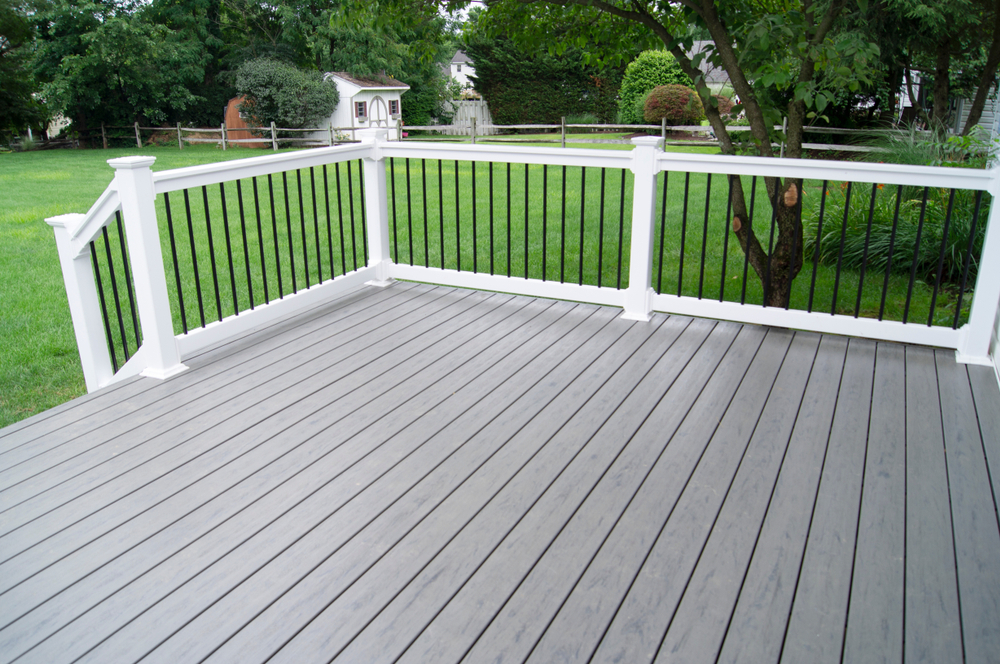
As the warmer months approach, your Balcony Decks become the perfect spot for relaxation, entertaining guests, and soaking up the Southern California sun. However, before you start planning your spring and summer gatherings, it’s essential to prepare your deck to ensure it’s safe and inviting. Let’s walk through some practical steps to prepare your Balcony Decks for the season. Deep Cleaning and Furniture Inspection The first step in preparing your balcony decks is thoroughly cleaning them. Over the fall and winter, debris, dirt, and moisture can accumulate, leading to mold growth, staining, or surface damage. Here’s how to tackle it: Sweep away leaves and debris to prevent water pooling and causing wood rot or surface corrosion. Wash surfaces with a mild soap solution and a soft brush, paying attention to corners and joints where grime builds up. Check for mold or mildew. If you spot any, use a vinegar-water mixture or a deck-safe cleaner to remove it. Once the deck is clean, inspect your outdoor furniture. Look for signs of rust on metal frames, cracks in wooden pieces, or weakened joints. Tighten screws, sand down rough spots, and apply weatherproof sealant to extend the life of your patio set. Safety Checks and Structural Integrity for Balcony Decks Spring and summer mean more foot traffic on your Balcony Decks, so conducting a safety check is crucial to prevent accidents. Here’s what to inspect: Railings and Balusters: Ensure all railings are sturdy and have no loose or corroded fasteners. Wobbly railings pose a serious safety hazard. Support Beams and Fasteners: Check for signs of wood rot, rusted bolts, or water damage beneath the deck’s surface. Surface Boards: Look for warping, cracking, or splintering. Loose boards should be secured immediately. Drainage Systems: Confirm that water flows away from the deck properly. Clogged drains or pooling water can accelerate damage to structural components. If you notice any structural concerns, it’s best to call a professional deck inspector to assess the damage and recommend necessary repairs. Get Ready for a Safe and Stylish Season With a clean surface, sturdy furniture, and secure railings, your Balcony Decks will be ready for a season of fun and relaxation. Regular maintenance keeps your space looking great and prevents minor issues from becoming costly structural problems. Need expert help to ensure your Balcony Decks are safe for spring and summer? Our team of certified deck inspectors in Southern California is here to provide thorough inspections and peace of mind. Contact us today to schedule an assessment and kick off the season with confidence! Deck Inspectors for Southern California is happy to offer our services in Los Angeles County, Riverside County, Orange County as well as San Diego County and all Southern California surrounding areas like: Los Angeles, Irvine, Long Beach, La Jolla, Glendale, Pasadena, Santa Ana, Huntington Beach, Dana Point, Burbank, Santa Monica, Anaheim, Temecula, Encinitas, Chula Vista, Vista, Mesa, San Diego, Oceanside, Escondido, Carlsbad, Poway, Mission Viejo, and El Cajon.
